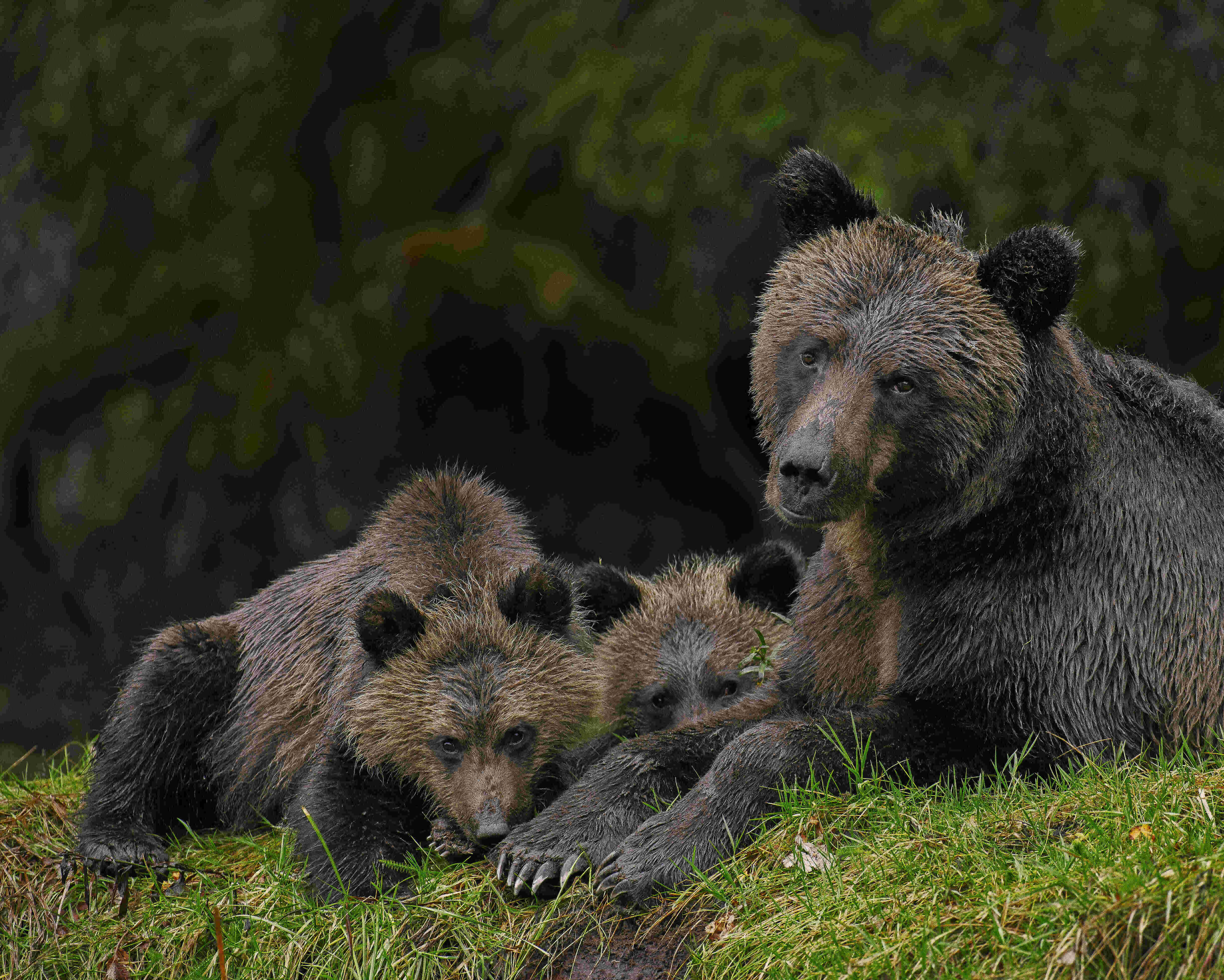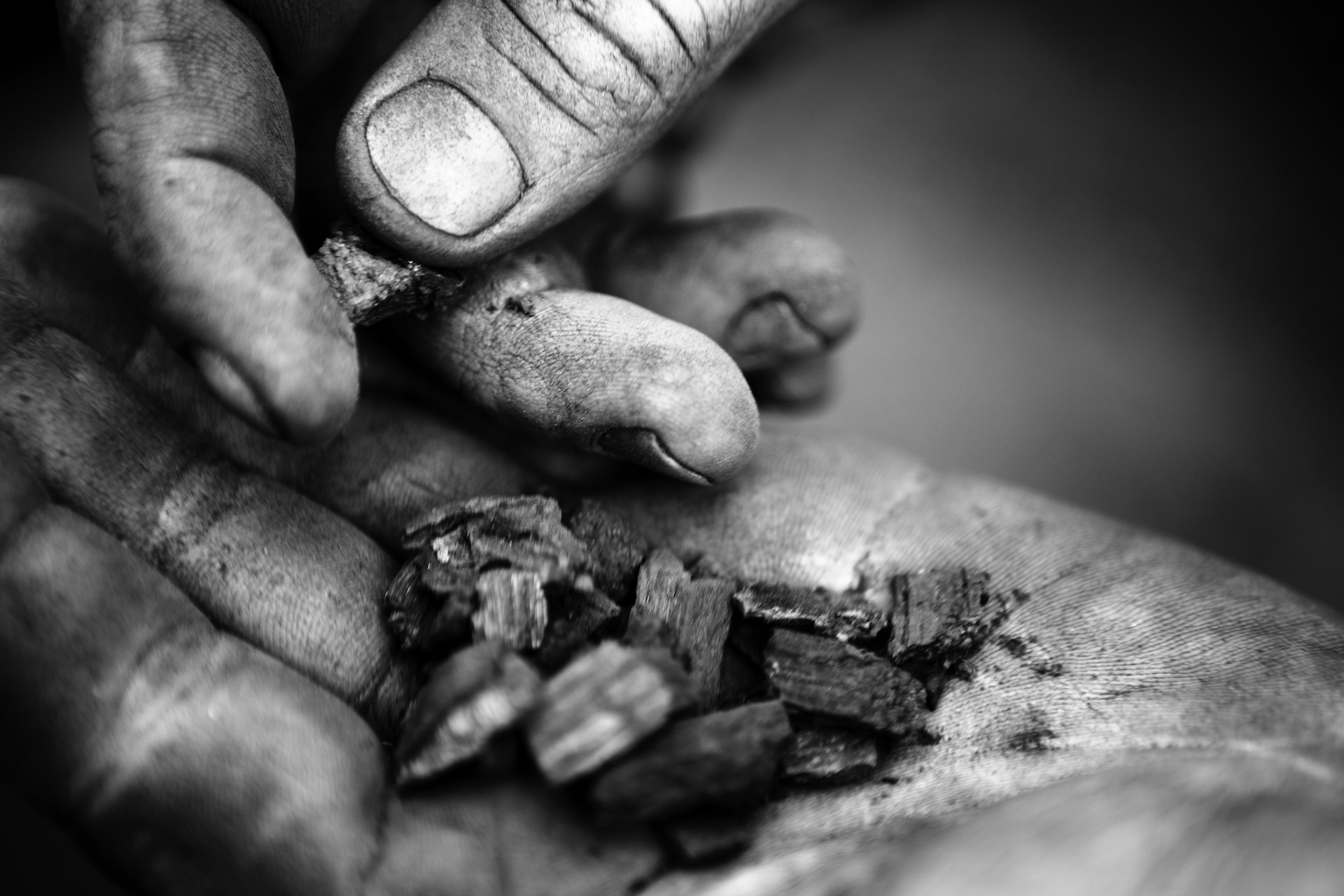Issue 56

Female grizzly bear and two cubs in the Great Bear Rainforest, Canada.
Education Images/Universal Images Group via Getty Images George Biesmans
George Biesmans
Indigenous-led conservation in the Great Bear Rainforest provides a model for protecting and restoring nature - Fifteen years of Indigenous-led conservation in the Great Bear Rainforest in British Columbia has safeguarded three million hectares of temperate rainforest and revitalized local First Nations economies and communities, according to a recent report. The success is primarily thanks to the use of a funding model called Project Finance for Permanence (PFP), which provides secure and long-term finance for large-scale conservation projects while centering locally-led management. It is increasingly being adopted around the world in nations including Brazil, Colombia, and Bhutan. In the Great Bear Rainforest project, funding decisions are guided by First Nations communities and have spurred the creation of indigenous-led businesses, ecological guardianship and habitat restoration programs, and investment in renewable energy. It provides a model for global conservation efforts, which increasingly recognize the need for projects led by indigenous peoples and local communities (IPLCs), as evidenced by the recently launched Global Biodiversity Funding Framework.
 Amy Boyer
Amy Boyer
Stage Zero - Restoration work is transforming San Pablo Bay, just northeast of San Francisco. The newest effort is restoring Lakeville Creek to "Stage Zero," returning it to a wet meadow with shallow interconnected channels instead of an erosively deepening ditch. Expected benefits are smaller flood pulses, increased groundwater recharge, more resilience to wildfire, greater biodiversity, and more carbon storage. The Stage Zero concept was initially advanced by Brian Cluer of California and Colin Thorne of the UK. They pointed out that current ideas about stream channels missed important natural river dynamics because of the U.S. and European history of channelizing floodplains for navigability, bottom-land farming, and water mills. In Oregon, the U.S. Forest Service started experimenting with restoration to Stage Zero, first in small meadows and then in larger creeks. The effort yielded an impressive increase in biomass and groundwater recharge. Stage Zero work is also seeing success in the U.K. For more on wetlands and their significance and benefits, visit our Wetlands Nexus.
 Benjamin Felser
Benjamin Felser
Dam-olition on California’s Klamath River - The world’s largest dam removal project is currently underway in Northern California. The river is home to threatened chinook and coho salmon, steelhead trout, and other ecologically and culturally essential fish. The efforts to dismantle the dams that produced hydropower for PacifiCorps stretch back to its initiation over 100 years ago, which displaced indigenous Shasta communities and blockaded salmon runs. Last year, the near local extinction of salmon populations due to disease outbreaks spreading in low-flow water caused the Karuk, Yurok, and Hoopa tribes to eliminate ancestral salmon ceremonies. Tribal researchers and knowledge holders believe dismantling these dams is the “single biggest restorative action” to “start bringing balance back to the ecosystem.” The efforts are part of a broader rewilding movement and were only possible due to community pressure and collaboration between tribal communities, outside researchers, and various levels of state and federal government.
 Claire Krummenacher
Claire Krummenacher
A faster, affordable approach to retrofitting - In Germany, a Dutch renovation technique called Energiesprong (literally, "energy jump") is making retrofitting of old, leaky apartments faster and more affordable, and in doing so, helping the country meet its building decarbonization targets. In Energiesprong, also known as serial renovation, facade components (including high-performance windows) are prebuilt in factories and then wrapped around buildings, providing an insulation transformation that's far quicker and less expensive to implement than remodeling the entire dwelling. With the addition of solar panels and heat pumps, the buildings gain the capacity to produce as much power as they consume. Thus far, over 5,000 Energiesprong projects have been completed in the Netherlands, and the method has spread as far as California and Canada. In Germany, however, energy efficiency renovation is of utmost priority, given that buildings account for 25% of the country's GHG emissions, and researchers are optimistic that the technique will play a key role in accelerating building modifications to meet climate targets.
 Courtney White
Courtney White
Climate Corps - On September 20th, President Biden announced the formation of the American Climate Corps (ACC), a youth job training program focused on actions that address climate change through initiatives such as building renewable energy infrastructure, restoring degraded watersheds for fire prevention, and improving community resilience along coastlines. The White House plan, issued as an Executive Order, aims to put more than 20,000 people to work (you can sign up here). It is a deliberate throwback to the famous Civilian Conservation Corps (CCC) established by President Franklin Roosevelt during the Great Depression, which ultimately employed 3 million men who planted 3.5 billion trees, built 3,470 fire lookout towers, and spent more than 4 million man-days fighting forest fires, among many other accomplishments. The CCC had its share of mixed results, and the ACC isn’t without critics, including concerns about draining resources from existing service programs such as AmeriCorps. But the ACC is supported by the Sunrise Movement, a group of youthful climate activists, among other organizations who praised the President for his leadership.
 Scott Hannan
Scott Hannan
Biochar testing gains ground in Mexico, Bolivia, and the U.S. - In the quest to improve agricultural practices by increasing the fertility of soils, reducing chemical inputs, and reducing carbon emissions, Biochar, a soil amendment similar to charcoal, is being tested and implemented around the world. The team at The Next 150 has been conducting field experiments in Guanajuato, Mexico, demonstrating its effectiveness in increasing water retention, improving fertility, and reducing agricultural production costs for around 23,000 farmers in the state. Researchers and activists in Bolivia are taking waste materials from forestry projects that would typically be burned and turning them into Biochar for indigenous farmers. A similar approach to recycling forestry waste is underway in Arkansas. Sara Duerte, who leads the project in Mexico, emphasizes that countries in the Global South that “often face increased exposure to natural disasters and extreme weather events” due to climate change are key players in creating and implementing creative solutions. For more information, see the Biochar Nexus.
Take Action on Nexus Support our work |

